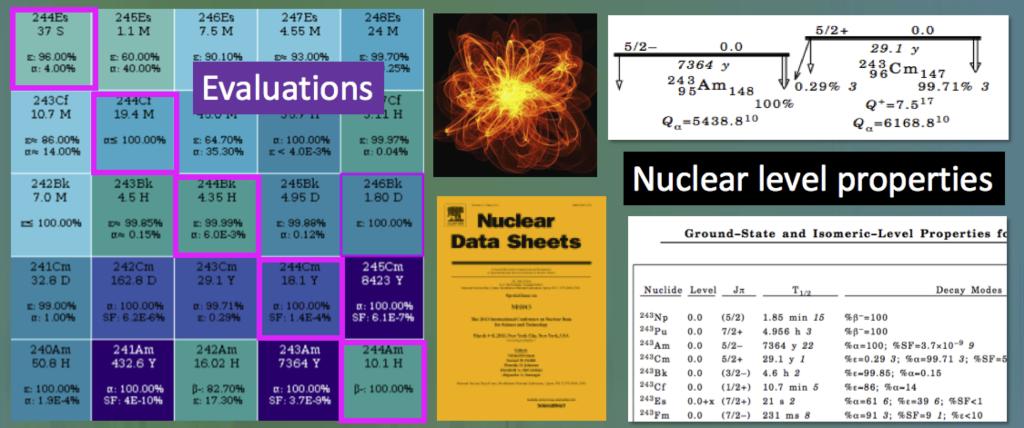
Nuclear Structure Data
A major effort in nuclear data in the ORNL Physics Division is the evaluation of the properties of subatomic nuclides. An evaluation is a determination of new “best” values of the energies, spins, parities, total widths, decay modes, decay branching ratios, decay widths, deformations, and other properties of all the quantum excited states of a nuclide. Nuclear structure evaluations are used by researchers around the world in applications including nuclear energy, nuclear security, space applications, and nuclear medicine, as well as in research in basic nuclear physics and nuclear astrophysics.
Each new evaluation of a nuclide is an update of the previous one, involving a critical assessment of all recent measurements of the level properties of a nuclide. These new measurements must then be properly combined with the previous evaluation according to a well-documented set of nuclear physics principles. The structure properties of nuclides are usually evaluated in sets according to their mass, because nuclei of the same mass are connected by beta decays and are related by their isospin symmetry.
Evaluation work is an extremely detailed activity, with some evaluations of a set of nuclides taking up to a year to complete. It can involve the assessment of measurement data found in hundreds of pages of publications, and the final documentation of the properties can be 15000 lines or more. The results are published in the journal “Nuclear Data Sheets” and are available online in the Evaluated Nuclear Structure Data File.
This work supports the goals of two coordinating organizations, the US Nuclear Data Program (USNDP) as managed by the US National Nuclear Data Center (NNDC), and the International Nuclear Structure and Decay Data Network as managed by the IAEA Nuclear Data Service. ORNL has been assigned responsibility for evaluating nuclides with masses ranging from A=241 – 249, and we regularly assess nuclei outside of this range based on priorities of the basic and applied research community. Some of our most recent evaluations or evaluation reviews include nuclides with masses 66, 137, 216, 218, 242, 244, 245, 248, and 249.
ORNL has additionally developed, and regularly maintains, the guidelines for producing nuclear structure evaluations that are used by scientists around the world.

